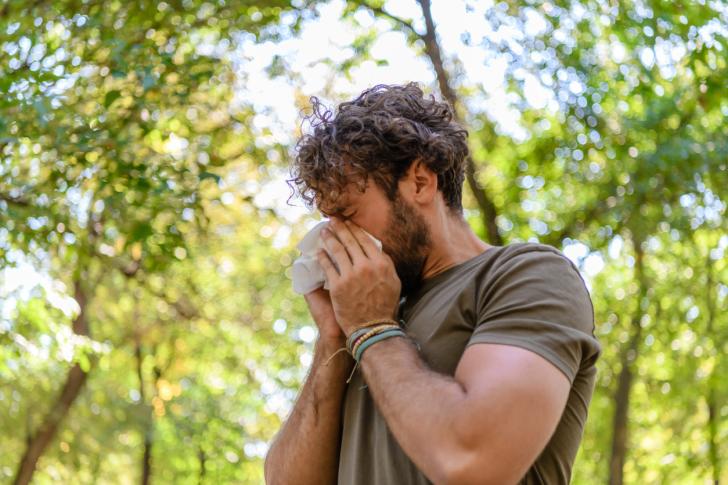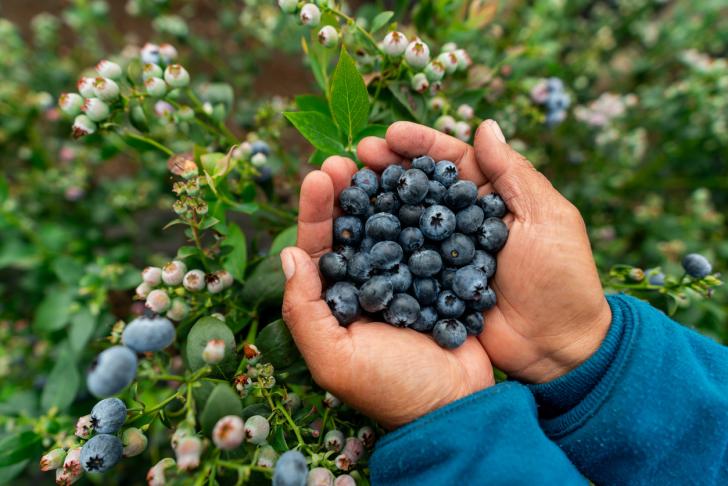Choosing Plant-Based Protein for a Healthy Future

Published
You may know that protein is important for your health. You also may have heard that certain protein foods have more impact on the environment than others. How do you get the protein your body needs without excessive harm to the environment?
Protein is essential for good health, particularly in helping your body repair itself and create new cells. You need protein to make hair, blood, bone, muscle, and other important substances that fight infection and maintain normal function1.
You may already know that animal product foods, such as meat, poultry, fish and dairy contain protein. What about plant-based foods like grains, nuts, seeds, and legumes? Are plant-based foods with protein equally beneficial to your health? And what is the difference in environmental impact between animal and plant-based foods?
How much protein do I really need?
The amount of protein you need can depend on your age, gender, activity level, and certain factors such as pregnancy or illness2. General recommendations are to get 10% to 35% of your total daily calories from protein2. Most Americans get about 15% of their daily calories from protein, which is well within the recommended daily requirements for protein3. Reasons that you might need to include more protein in your diet are if you’re an adolescent, older adult, pregnant, or exercise regularly. However, always check with your healthcare provider first before making any significant changes to your protein intake. If you live in the U.S. and have adequate access to enough food, it is likely that you are already eating enough.
What foods are high in protein?
Animal-based foods such as meat, poultry, fish, eggs, and dairy products are all high in protein. Including any of these foods within a meal provides you with a protein source. There are also plant foods that are high in protein. These foods include lentils, beans, tofu, tempeh, edamame, soymilk, nuts, seeds, quinoa, and peas. Eating a variety of plant protein foods throughout the day will also supply you with the protein you need, as long as you are also meeting your total calorie needs.
What are the environmental impacts of different protein sources?
Food production is responsible for one-quarter of the world’s greenhouse gas emissions4. Thus, it is essential to think about the environmental impact of the foods we eat. The foods that top the list for greenhouse gas emissions are animal-based foods, with beef at the top, then lamb and mutton, followed by cheese5. Dairy, shellfish, pork, poultry, and eggs are also foods that rank within the top ten for greenhouse gas emissions producing foods5. Many of the animal-based foods that are high in protein are also high in greenhouse gas emissions. The current global demand for animal-based foods is unsustainable and causing overuse and degradation of our land and water and polluting our air4. By replacing just some of the animal-based foods that you eat with plant-based foods, you can be a part of reducing the demand for these products.
Another result of reducing your animal-based food intake is that it can positively impact your health as well. A diet that is rich in plant foods and low in meat, particularly red meat, is associated with a lower risk of chronic diseases. Thus, eating less meat can positively impact your health as well as the environment.
Can I get enough protein from just plant foods?
In short, you can get all of the protein you need from plant-based food sources. If you enjoy eating animal-based foods, you do not need to completely remove those foods from your diet. However, if you are concerned about getting enough protein, it is important to know that you can get all the protein you need from plant-based sources.
Are you interested in switching to a plant-based diet or in replacing some of the animal-based protein you eat with plant-based protein, but don’t know where to start? Schedule an appointment for a nutrition consult at Bastyr Center for Natural Health in Seattle or Bastyr University Clinic in San Diego for specific guidance on nutrition to meet your health and nutrition goals.
About the Author
Kathryn Ross is a Dietetic Intern at Bastyr University with a Master’s in Nutrition and Dietetics. She enjoys growing her knowledge and understanding of health and wellness at every stage of life. Kathryn also owns an endurance sport coaching business called Kat Ross Coaching LLC.
References
-
Byrd-Bredbenner, C., Berning, J., & Kelley, D. (2019). Chapter 7. In G. Moe (Ed.), Wardlaw's Perspectives in Nutrition (11th ed., pp. 229–262). essay, McGraw Hill Education.
-
Harvard Medical School. (2022, January 19). How much protein do you need every day? Harvard Health. Retrieved February 5, 2023, from https://www.health.harvard.edu/blog/how-much-protein-do-you-need-every-day-201506188096
-
Wempen, K. (2022, April 29). Are you getting too much protein? Speaking of Health. Retrieved February 5, 2023, from https://www.mayoclinichealthsystem.org/hometown-health/speaking-of-health/are-you-getting-too-much-protein#:~:text=The%20recommended%20dietary%20allowance%20to,grams%20of%20protein%20per%20day.
-
Espinosa-Marrón, A., Adams, K., Sinno, L., Cantu-Aldana, A., Tamez, M., Marrero, A., Bhupathiraju, S. N., & Mattei, J. (2022). Environmental impact of animal-based food production and the feasibility of a shift toward sustainable plant-based diets in the United States. Frontiers in Sustainability, 3. https://doi.org/10.3389/frsus.2022.841106
-
Ritchie, H. (2020, January 24). You want to reduce the carbon footprint of your food? Focus on what you eat, not whether your food is local. Our World in Data. Retrieved February 5, 2023, from https://ourworldindata.org/food-choice-vs-eating-local


